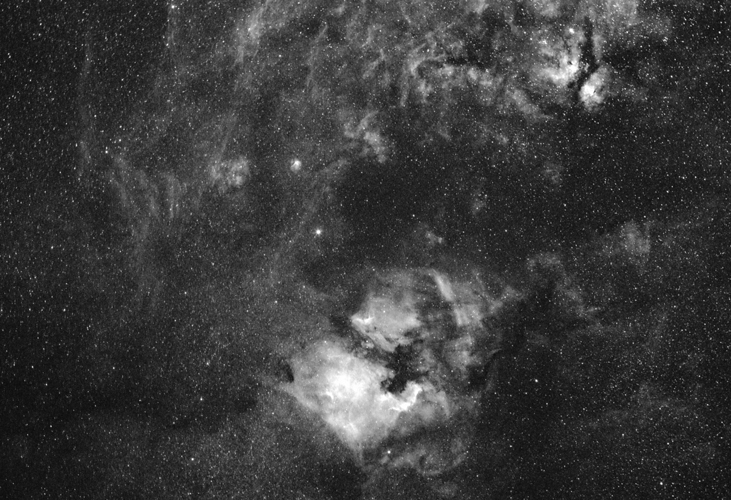Cygnus Widefield H-alpha
Click on photo for larger image.
The glow from interstellar nebulae is often dominated by a deep red glow from excited hydrogen gas. The electrons in the hydrogen atoms absorb energy from the intense radiation generated by nearby hot young stars and then emit that energy as light at particular wavelengths. Electrons going from quantum number n=3 to n=2 produce light with a wavelength of 565.28 nm, called the H-alpha spectral line (the lowest energy in the Balmer series of lines). To the human eye this is a very deep red.
The photo above was taken with a filter over the camera's detector that blocked all light except in a 12 nm band around the H-alpha line. The intensity of the H-alpha light is shown in this grayscale image. The region shown extends over a 10x15 degree swath in the constellation Cygnus the swan. Stars are still visible, but the the image is dominated by the bright billows of interstellar gas and intervening dark molecular clouds. Near the center of the image is the bright star Deneb (Alpha Cygni) and in the upper right is Sadr (Gamma Cygni) and the Sadr region nebula (IC 1318). North American Nebula (NCG 7000) and the Pelican Nebula (IC 5070, IC 5067) are visible in the lower left. The subtle wisps of glowing nebulosity throughout the broader region hint at how much is normally hidden from our eyes.
Craig Lent, Canon 30D Hutech-modified, with Astronomik 12nm H-alpha filter, 85mm f/1.2 lens @f/2.8, 100 min exposure, Potawatomi Wildlife Park, Marshall County, Indiana.
